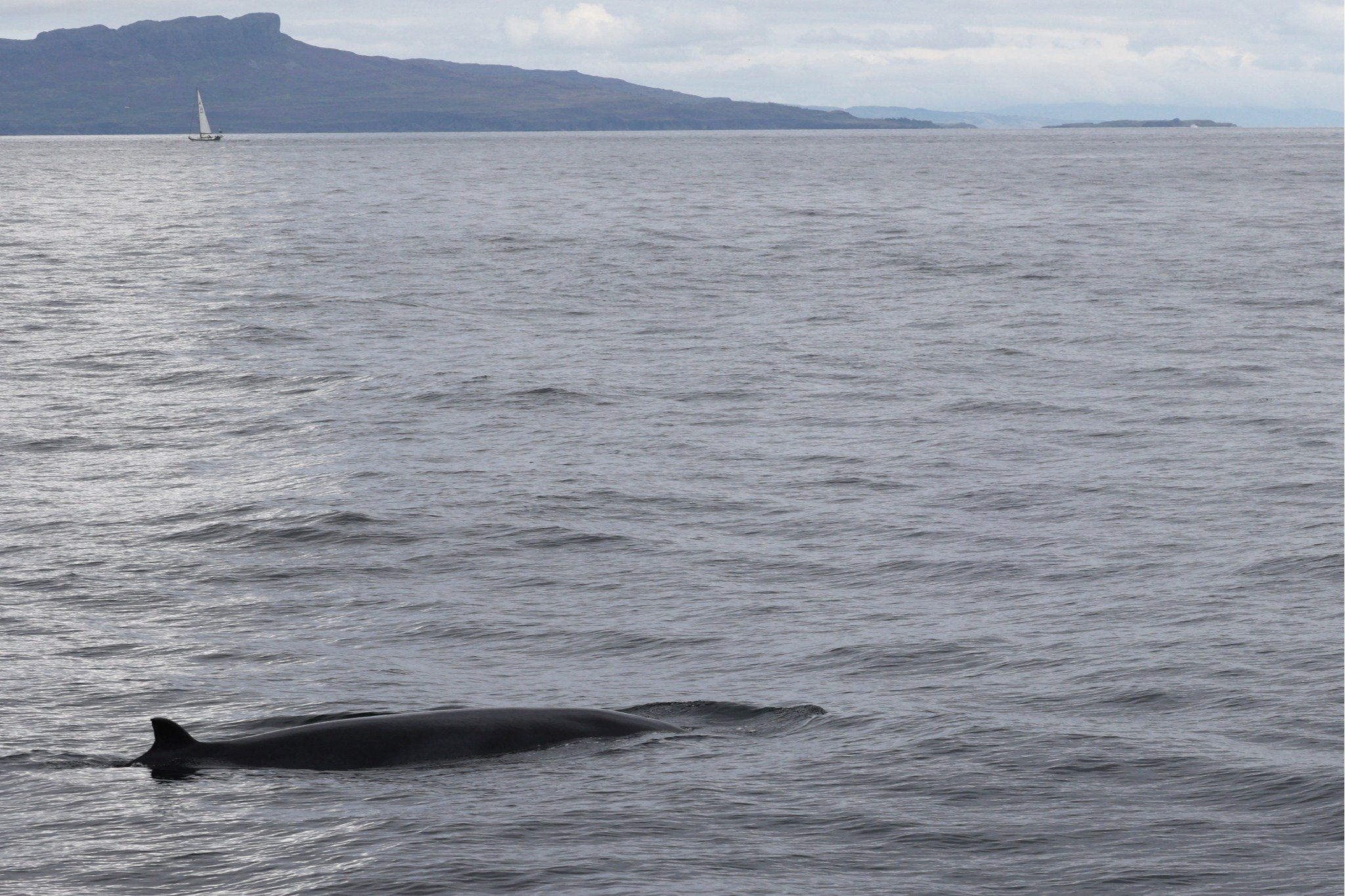Guess who's back...Knobble the minke whale!
Knobble, with the Isle of Eigg in the background, 15 August 2023 © Andy Tait, Sea Life Mull
For over two decades, Knobble - the much-loved minke whale - has been returning to the waters off the west coast of Scotland each summer, highlighting how important Hebridean seas are for these animals.
Knobble has been re-sighted more than 50 times, with most encounters in the waters around Mull during July and August. 2023 was no different, with Andy Tait - a dedicated guide on board wildlife tour operator, Sea Life Mull - spotting Knobble yesterday (Mon 15 August), with photographs sent to HWDT which allowed researchers to confirm the identify the whale.
“Knobble came quite close to the boat and came past us at least twice quite close, so we all got a good look at his unique dorsal fin with a little knobble at the top!!”
Knobble’s distinctive dorsal fin
Andy also reported spotting Knobble on the 19th July. Much of what we know about Knobble is thanks to Andy Tait’s photos and sightings data reported through the Whale Track app by Sea Life Mull, previously Sea Life Surveys. For over two decades, Andy and the crew on board have been spotting Knobble and logging the data with HWDT to keep an official record of the whale’s occurrence in Hebridean seas. The Whale Track community is vital to improving our understanding of minke whales and other species off Scottish coasts, with over 20,000 sightings of whales, dolphins, porpoises and basking sharks reported through the app since it launched in 2017.
However, there is still much to discover about these majestic animals, including solving the mystery of where minke whales go in the winter.
We encourage members of the public to get involved and send in photographs of any whales and dolphins they’ve photographed, to try and identify the individuals. Using a technique called photo-identification (photo-ID), HWDT researchers can build a better picture of both individual whales and the wider population.
Andy’s reports highlight how vital boat crews and the public are to track the movements of individual animals year after year and contribute to long-term monitoring in the region. Anyone can get involved and the Trust have had photographs submitted from land, tour boats, kayaks and ferries, that have contributed to their photo-identification catalogues, that have been running since the early 1990’s.
Knobble, 15 August © Andy Tait, Sea Life Mull
Photo-ID is a non-invasive research technique and is an extremely useful tool for learning more about whales and dolphins. Whales and dolphins have distinct dorsal fins that can be used to identify an individual, much like our fingerprints. By curating catalogues of the individual whales and dolphins found off Scotland’s west coast, we can build a deeper understanding of these enigmatic creatures. HWDT researchers are currently updating the minke whale catalogue, which will be launched alongside an updated bottlenose dolphin catalogue in early October 2023.
“If you’ve got any photographs or videos of whales off the west coast of Scotland, past or present, please get in touch. Your photos help us to build a long-term picture of whale movements in Scotland and show if individuals favour particular areas. They can also teach us about the health of individuals and we can learn more about the threats that they face. With these insights into their lives, your photographs provide the evidence needed for their protection. ”
It’s not just minke whales, HWDT catalogues sightings of all whales, dolphins, porpoises and basking sharks seen on the west coast of Scotland. So what better time to get involved and help improve our understanding by sending in your photographs for analysis - download the Whale Track app - which is free and really user friendly - or submit sightings via the website.
“Every single sighting and photo is important and we would like to extend a huge thank you to everyone who is part of the Whale Track Community and has taken the time to report what they have seen.”



